Topics
Category
Era
Turkey Industry in Minnesota
The Minnesota turkey industry began with small backyard flocks raised on family farms. The Minnesota Turkey Growers Association, the National Turkey Improvement Plan, and advances in disease prevention helped Minnesota rise to become the top turkey-producing state in the country.
Scientists believe that the domestication of the turkey began with the ancient Maya in Central America, possibly as early as 300 BCE–100 CE. Early inhabitants of what is now the southwestern portion of the United States raised domesticated turkeys as early as 200 BCE–500 CE. Archaeological evidence suggests that early civilizations valued turkeys more for their feathers, likely used for ceremonial purposes and clothing embellishment, than for food. They may have used turkey bones to create beads, musical instruments, and tools.
In the early twentieth century, Minnesota growers raised small flocks of turkeys on family farms. Between 1910 and 1920, U.S. farmers raised 3 million turkeys annually. With the introduction of large commercial incubators in the mid-1930s, the number of eggs hatched each year quickly grew and more farmers began to raise turkeys. Most eggs came into Minnesota from other states at that time, bringing with them egg-transmitted diseases.
Diseases such as blackhead (histomoniasis) and avian tuberculosis posed serious threats. In the 1920s, Dr. Ruel Fenstermacher, the first director of the Veterinary Diagnostic Laboratory at the University of Minnesota, and Dr. L. E. Jenkins worked with the Minnesota Board of Animal Health to develop programs to control these diseases.
In 1935, the government started the National Poultry Improvement Plan with the goal of eliminating pullorum-typhoid, an infectious bacterial disease, from turkeys and other types of poultry. The disease first surfaced in Minnesota turkeys in 1928 and became a scourge over the next two decades. When fowl typhoid appeared in Minnesota in 1935, the university's Diagnostic Lab began a study of salmonella bacterial infections in turkeys that led to a state-funded disease control program in 1943.
Like all Minnesota farmers, early turkey growers gambled with the climate. Young birds started in brooder houses and then moved onto open ranges with limited shelter from harsh weather. The 1940 Armistice Day Blizzard caused large losses to Minnesota's fledgling turkey industry. It wiped out many flocks and prompted the Farm Owners Mutual Insurance Company (later Farmers Mutual Hail Insurance) to begin offering fire and storm insurance on flocks in 1942. Insurance coverage encouraged the growth of Minnesota's commercial turkey industry.
In the late 1950s, growers adopted the Clinton pole barn and began to raise flocks indoors, which has since become standard procedure. The large metal buildings sheltered the birds in a temperature-controlled environment equipped with automatic feeders and water stations. They also prevented wild bird diseases and enabled growers to raise more flocks each year.
As the industry grew, so did the need for information. University of Minnesota Extension veterinarian Dr. William M. "Doc" Billings led a group of farmers to form the Minnesota Turkey Growers Association (MTGA) in January 1939 during the University's Farm and Home Week in St. Paul. The first board of directors included Billings and leading growers Clem Thurnbeck, Sven Ranelius, Graydon McCulley, and others. The organization elected Robert Bowden as its first president. MTGA secretary Roy Baumgartner initiated a monthly newsletter for members that grew into the Gobbles magazine.
The National Turkey Federation (NTF) appointed a committee in 1941 to develop a National Turkey Improvement Plan. It set goals of expanding production, improving disease control, and increasing market quality. With the U.S. Secretary of Agriculture's approval, it launched two years later.
Minnesota adopted the plan in 1945 with supervision by the Minnesota Poultry Improvement Board. The University of Minnesota Diagnostic Laboratory then set up a breeder-hen research program. Over the next four decades, avian pathologists L. E. Jenkins, Benjamin S. Pomeroy, and staff made great strides in the area of disease diagnosis and prevention, particularly in the control of egg-transmitted diseases.
In 1949, Graydon McCulley became the first Minnesotan to hold the office of President of the NTF. That November, he and a group representing his organization and the Poultry and Egg National Board traveled to Washington, D.C., to present President Harry S. Truman with a Minnesota-grown Thanksgiving turkey.
The presentation has become an annual event. President John F. Kennedy started the annual turkey "pardoning" ceremony, sparing the birds from gracing a Thanksgiving table. Minnesota has a similar tradition, with a turkey presentation to the governor each November. Those birds don't receive a pardon, however; they go to local food shelves for families to enjoy on Thanksgiving.
The turkey industry has had a major impact on related Minnesota businesses. Millions of dollars' worth of corn and soybeans becomes turkey feed. Seven meat processing plants in the state produce more than 1.2 billion pounds of turkey each year and provide thousands of jobs. The world's second largest turkey processing company, Jennie-O Turkey Store, Inc., has its headquarters in Willmar. Earl B. Olson founded the company in 1949 and named it after his daughter, Jennifer. Hormel bought the company in 1986 and merged it with a later acquisition, The Turkey Store (formerly Jerome Foods, Inc.). Other Minnesota processing companies include Turkey Valley Farms and Northern Pride, Inc.
Minnesota is also home to one of the largest turkey hatcheries in the world. In 1945, farmers Albert Huisinga, Albin Norling, and Herman Nelson started Willmar Poultry and Egg Company to process their own birds and produce turkey poults (baby turkeys) for local growers. The company acquired hatcheries in other states and merged with AgForte in 2009. The company merged with Aviagen in 2017 to become Select Genetics, with the capacity to produce 48 percent of U.S. turkey poults. It produces 137 million poults a year.
In the 1950s, processors began to offer new products made from turkey, including ground turkey, hot dogs, sausage, turkey ham, and other items. More products meant more advertising. In 1956, the MTGA hired home economist Arlene Stansfield to promote turkey through cooking demonstrations and recipes. The MTGA auxiliary group, Minnesota Gal Gobblers (later Minnesota Women for Turkey), founded in 1976, actively promotes turkey products.
The Minnesota State and Federal Crop Reporting Service began in 1949. This service keeps such records as the number of breeder hens and the number of turkeys raised for market. Minnesota turkey production soared from 3.6 million birds in 1950 to more than 14 million just a decade later.
In 1959, Minnesota received its first top ranking in turkey production in the U.S. with more than 13 million raised, a position it consistently holds. By 2016, annual production totaled 45 million birds raised by 450 growers on 600 farms. Top turkey-producing counties in Minnesota include Kandiyohi, Stearns, Morrison, Lyon, Ottertail, Rice, Meeker, Becker, Redwood, and Brown.
The industry generates a total of $866 million each year in cash receipts. Minnesota exports about eight percent of all turkey produced to such countries as Mexico, China, and Canada. In 2014, the value of these exports totaled $92 million.
An outbreak of highly pathogenic avian influenza (bird flu) in March 2015 hit the industry hard. Growers lost more than 9 million turkeys on 110 quarantined farms in twenty-three counties. Governor Mark Dayton declared a peacetime emergency on April 23, activating the State Emergency Operations Center. The U.S. Department of Agriculture paid $60.8 million in compensation for healthy birds destroyed to prevent the spread of the virus.
Bibliography
"A Look Back at 75 Years: Minnesota Turkey." YouTube video, 10:51. Posted by Minnesota Turkey Growers Association, June 23, 2014.
https://www.youtube.com/watch?v=A7vRRWvfl28
Condon, Patrick. "Dayton Celebrates Minnesota Turkey Industry." Minneapolis Star Tribune, November 21, 2016.
http://www.startribune.com/dayton-celebrates-minnesota-turkey-industry/402319035/
Hughlett, Mike. "Bird Flu Still Affecting Minnesota Turkey Production." Minneapolis Star Tribune, August 12, 2015.
http://www.startribune.com/bird-flu-still-affecting-minnesota-turkey-production/321510051/#1
Iowa Turkey Federation. Bird Flu Myths.
http://iowaturkey.org/bird-flu-myths/
Lindrud, Shelby. "Willmar Poultry, Aviagen Establish New Turkey Poult Supplier." West Central Tribune, March 17, 2017.
http://www.wctrib.com/news/local/4235971-willmar-poultry-aviagen-establish-new-turkey-poult-supplier
Minnesota Turkey Growers Association.
http://minnesotaturkey.com
——— . Working Partners for 50 Years: the History of the Minnesota Turkey Industry and the Minnesota Turkey Growers Association. St. Paul: The Association, [1989].
National Chicken Council. Per Capita Consumption of Poultry and Livestock, 1965 to Estimated 2016, in Pounds.
http://www.nationalchickencouncil.org/about-the-industry/statistics/per-capita-consumption-of-poultry-and-livestock-1965-to-estimated-2012-in-pounds/
Minnesota State-Federal Crop and Livestock Reporting Service. Minnesota's Turkey Industry. St. Paul: Minnesota State-Federal Crop and Livestock Reporting Service, 1962.
Select Genetics/Willmar Poultry Company.
http://select-genetics.com/
Related Resources
Primary
Gobbles, 1963–
Description: Serial newsletter produced by the Minnesota Turkey Growers Association.
Minnesota Crop and Livestock Reporting Service. Minnesota Weekly Turkey: Week Ending . . . St. Paul: Minnesota Crop and Livestock Reporting Service, 1972–
Minnesota Department of Agriculture Promotion Councils Records, 1965–1990
Manuscript Collection, Minnesota Historical Society, St. Paul
Description: Hearing testimony, referendums, promotional orders, and background information documenting the activities of a variety of councils organized to promote Minnesota commodities, including turkey.
Minutes and Quarterly Reports, 1931–1957
Minnesota Poultry Improvement Board
State Archives Collection, Minnesota Historical Society, St. Paul
Description: Minutes cover operational topics such as hatchery, flock and turkey accreditation, and other information relating to the poultry industry. Quarterly reports include statistics, participation in the National Poultry Improvement Plan, and other information.
Pamphlets Relating to Poultry and Other Farm Birds in Minnesota, 1934–
Pamphlet Collection, Minnesota Historical Society, St. Paul
Description: Pamphlets and printed ephemera relating to poultry breeds, improvement projects, feeding, egg production, this history of poultry breeding in Minnesota, poultry shows, and related topics.
Turkey News Letter
Description: University of Minnesota, University Farm.
Weekly Turkey Hatchery Report, 1968–1970
Description: Serial report produced by the Minnesota Crop and Livestock Reporting Service.
Secondary
Doran, Marie. Jennie-O Turkey Store: A History. Willmar, MN: Jennie-O Turkey Store, Inc., 2016.
Web
National Turkey Federation. Statistics.
http://www.eatturkey.com/why-turkey/stats
——— . Farm to Fork Tour 2015.
https://www.youtube.com/watch?v=irQ4dN8nJn8
——— . History of the National Turkey Federation.
https://www.youtube.com/watch?v=ZU_F4HeMtRg
College of Veterinary Medicine, University of Minnesota. Veterinary Diagnostic Laboratory. https://www.vdl.umn.edu/about-us/our-history
Related Images
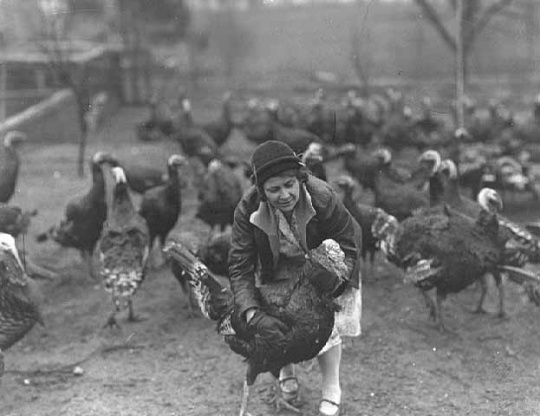
Woman and turkeys
Holding Location
Articles
More Information
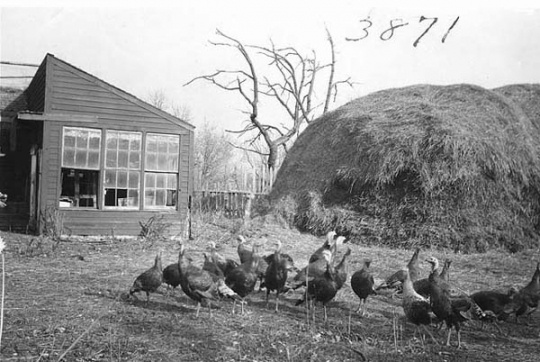
Turkey flock
Holding Location
Articles
More Information
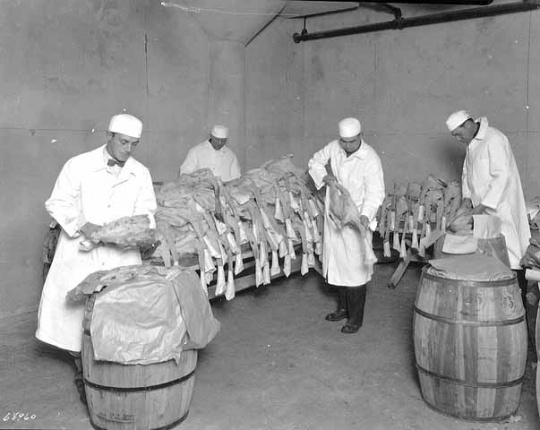
Turkeys, Land O'Lakes, Minneapolis
Holding Location
Articles
More Information
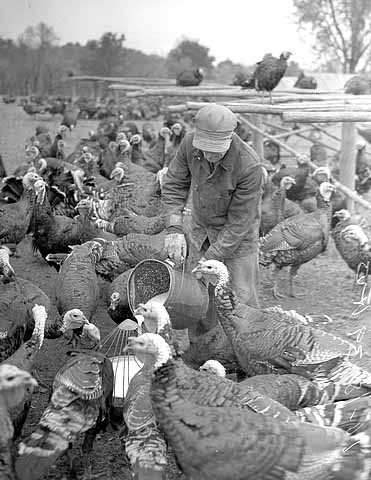
Man feeding turkeys
Holding Location
Articles
More Information
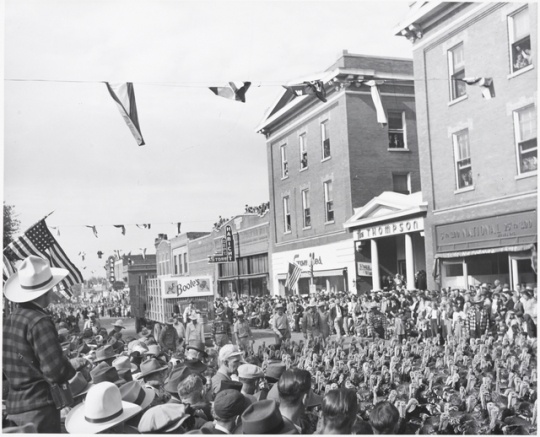
King Turkey Day Program, Worthington
Holding Location
Articles
More Information
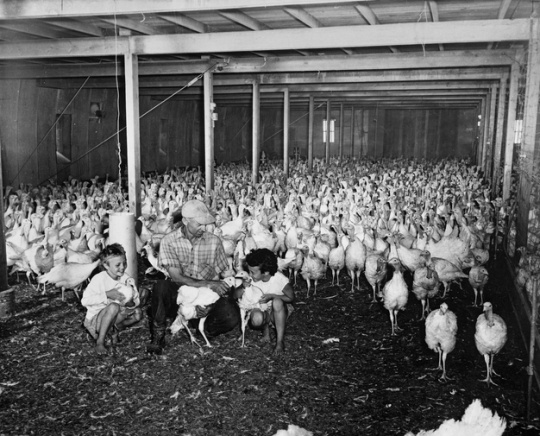
Interior of a turkey barn
Holding Location
Articles
More Information
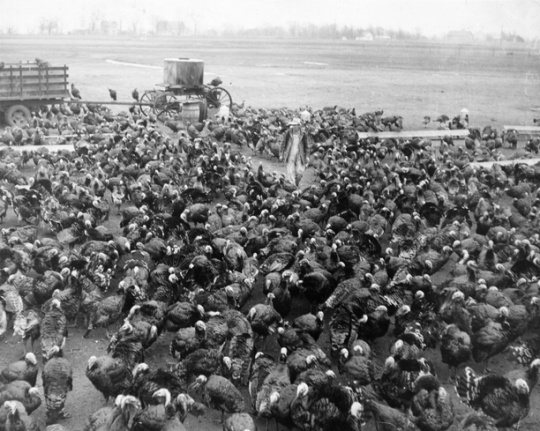
Turkey farm
Holding Location
Articles
More Information
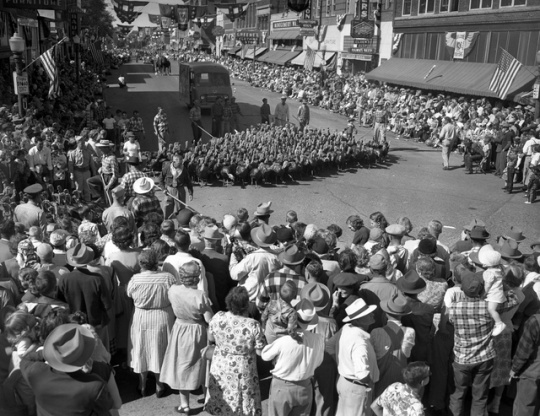
Gateway Days in Worthington
Holding Location
Articles
More Information
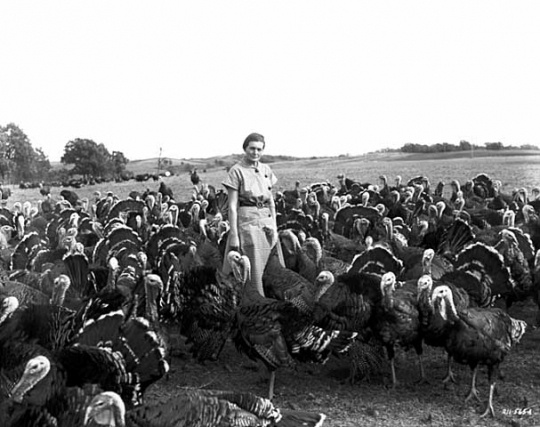
Woman with turkeys
Holding Location
Articles
More Information
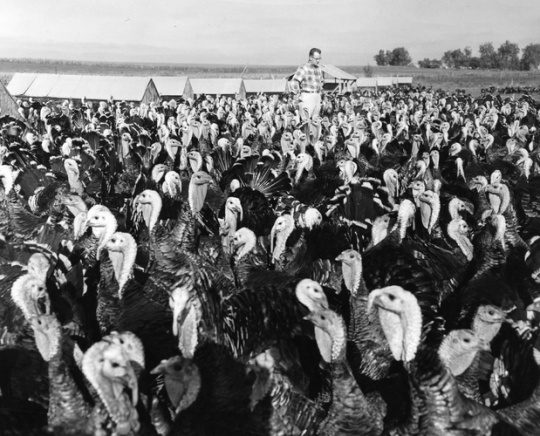
Turkey farm at Worthington
Holding Location
Articles
More Information
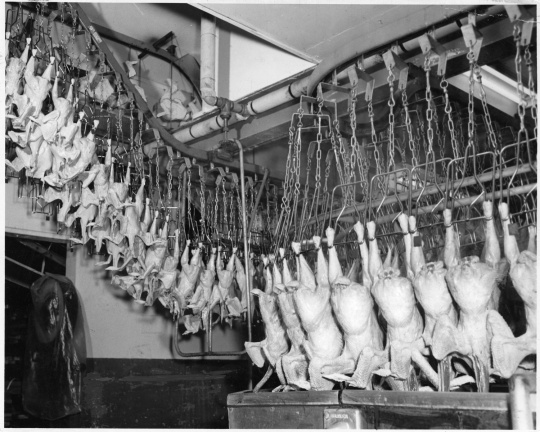
Processing turkeys
Holding Location
Articles
More Information
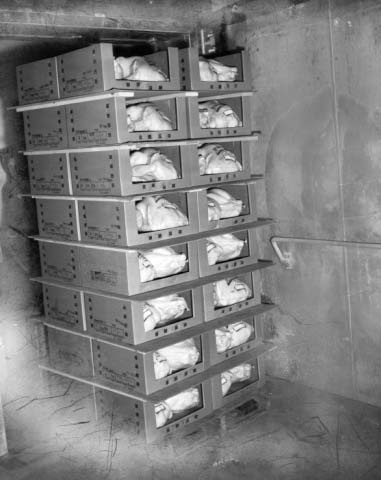
Turkeys ready to be put into the freezer
Holding Location
Articles
More Information
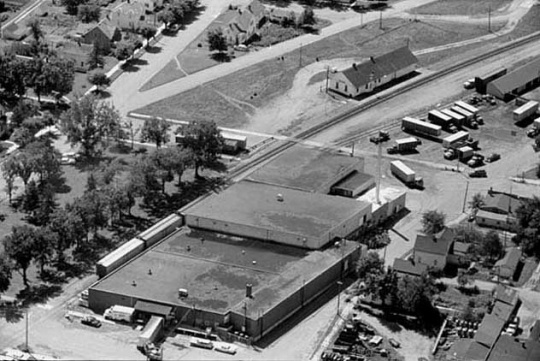
Turkey processing plant, Melrose
Holding Location
Articles
More Information
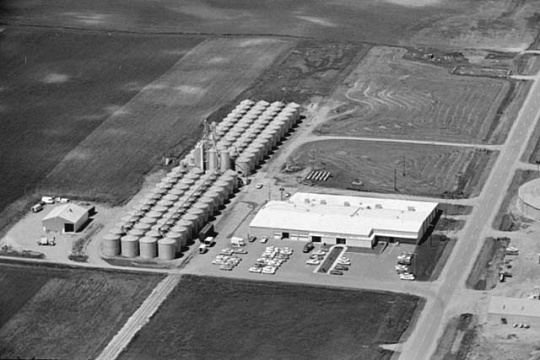
Willmar Poultry Company, Willmar
Holding Location
Articles
More Information
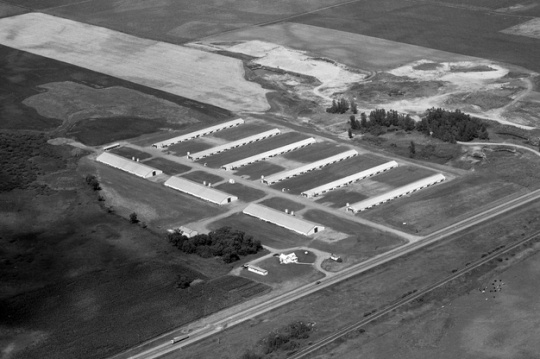
Turkey farm, Atwater
Holding Location
Articles
More Information
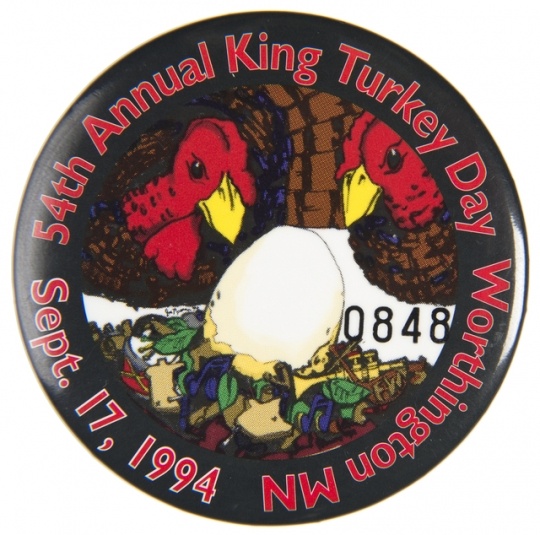
Turkey Day button from Worthington
All rights reserved
Holding Location
Articles
More Information
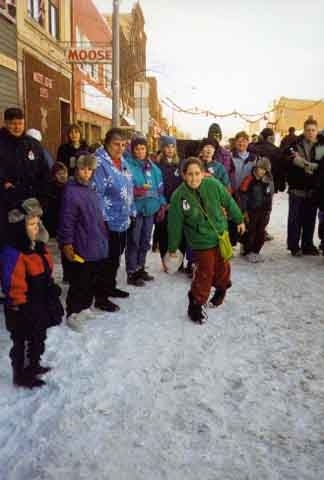
Turkey Bowling at Ice Box Days, International Falls
Holding Location
Articles
More Information
Related Articles
Turning Point
In January 1939, Minnesota's commercial turkey industry is born when a group of farmers attending the University of Minnesota's Farm and Home Week forms the Minnesota Turkey Growers Association.
Chronology
Mid-1930s
1939
1943
1943
1945
1946
1949
1949
1950s
1950s
1956
1959
1965
1976
2015
2016
Bibliography
"A Look Back at 75 Years: Minnesota Turkey." YouTube video, 10:51. Posted by Minnesota Turkey Growers Association, June 23, 2014.
https://www.youtube.com/watch?v=A7vRRWvfl28
Condon, Patrick. "Dayton Celebrates Minnesota Turkey Industry." Minneapolis Star Tribune, November 21, 2016.
http://www.startribune.com/dayton-celebrates-minnesota-turkey-industry/402319035/
Hughlett, Mike. "Bird Flu Still Affecting Minnesota Turkey Production." Minneapolis Star Tribune, August 12, 2015.
http://www.startribune.com/bird-flu-still-affecting-minnesota-turkey-production/321510051/#1
Iowa Turkey Federation. Bird Flu Myths.
http://iowaturkey.org/bird-flu-myths/
Lindrud, Shelby. "Willmar Poultry, Aviagen Establish New Turkey Poult Supplier." West Central Tribune, March 17, 2017.
http://www.wctrib.com/news/local/4235971-willmar-poultry-aviagen-establish-new-turkey-poult-supplier
Minnesota Turkey Growers Association.
http://minnesotaturkey.com
——— . Working Partners for 50 Years: the History of the Minnesota Turkey Industry and the Minnesota Turkey Growers Association. St. Paul: The Association, [1989].
National Chicken Council. Per Capita Consumption of Poultry and Livestock, 1965 to Estimated 2016, in Pounds.
http://www.nationalchickencouncil.org/about-the-industry/statistics/per-capita-consumption-of-poultry-and-livestock-1965-to-estimated-2012-in-pounds/
Minnesota State-Federal Crop and Livestock Reporting Service. Minnesota's Turkey Industry. St. Paul: Minnesota State-Federal Crop and Livestock Reporting Service, 1962.
Select Genetics/Willmar Poultry Company.
http://select-genetics.com/
Related Resources
Primary
Gobbles, 1963–
Description: Serial newsletter produced by the Minnesota Turkey Growers Association.
Minnesota Crop and Livestock Reporting Service. Minnesota Weekly Turkey: Week Ending . . . St. Paul: Minnesota Crop and Livestock Reporting Service, 1972–
Minnesota Department of Agriculture Promotion Councils Records, 1965–1990
Manuscript Collection, Minnesota Historical Society, St. Paul
Description: Hearing testimony, referendums, promotional orders, and background information documenting the activities of a variety of councils organized to promote Minnesota commodities, including turkey.
Minutes and Quarterly Reports, 1931–1957
Minnesota Poultry Improvement Board
State Archives Collection, Minnesota Historical Society, St. Paul
Description: Minutes cover operational topics such as hatchery, flock and turkey accreditation, and other information relating to the poultry industry. Quarterly reports include statistics, participation in the National Poultry Improvement Plan, and other information.
Pamphlets Relating to Poultry and Other Farm Birds in Minnesota, 1934–
Pamphlet Collection, Minnesota Historical Society, St. Paul
Description: Pamphlets and printed ephemera relating to poultry breeds, improvement projects, feeding, egg production, this history of poultry breeding in Minnesota, poultry shows, and related topics.
Turkey News Letter
Description: University of Minnesota, University Farm.
Weekly Turkey Hatchery Report, 1968–1970
Description: Serial report produced by the Minnesota Crop and Livestock Reporting Service.
Secondary
Doran, Marie. Jennie-O Turkey Store: A History. Willmar, MN: Jennie-O Turkey Store, Inc., 2016.
Web
National Turkey Federation. Statistics.
http://www.eatturkey.com/why-turkey/stats
——— . Farm to Fork Tour 2015.
https://www.youtube.com/watch?v=irQ4dN8nJn8
——— . History of the National Turkey Federation.
https://www.youtube.com/watch?v=ZU_F4HeMtRg
College of Veterinary Medicine, University of Minnesota. Veterinary Diagnostic Laboratory. https://www.vdl.umn.edu/about-us/our-history


















